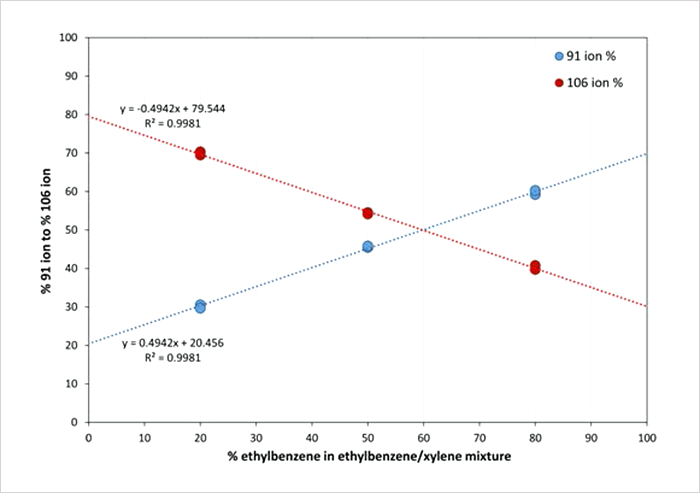Mark J. Perkins,1 Vaughan S. Langford2 1Anatune Ltd, Girton Road, Cambridge, CB3 0NA, United Kingdom \ 2Syft Technologies Ltd, 3 Craft Place, Christchurch 8024, New Zealand
Direct mass spectrometry (DMS) techniques struggle to speciate ethylbenzene from the xylene isomers, yet increasingly regulators are imposing different emission and exposure limits for these compounds. This application note describes a significant breakthrough for DMS, because selected ion flow tube mass spectrometry (SIFT-MS) readily achieves direct, real-time speciation of the xylenes from ethylbenzene.
Resolution of ethylbenzene from the xylenes is important when regulators impose different emission or exposure limits, as is the case for occupational exposure limits in the European Union (timeweighted averages of 100 and 50 ppm, respectively). Direct mass spectrometry techniques traditionally struggle to distinguish these isomers, so measurement has been reported as a total concentration. In this application note we apply the SIFT-MS technique to achieve direct, real-time speciation of the xylenes from ethylbenzene.

A Syft Technologies Voice200ultra SIFT-MS instrument — which applies multiple, rapidly switchable reagent ions with different ionization properties (see syft.com/SIFT-MS) — was used in this study. Air was sampled continuously through the instrument’s high-performance inlet at approximately 25 sccm. The total ethylbenzene + xylenes concentration was measured using the NO+ reagent ion. The O2 + reagent ion reacts with ethylbenzene and the xylenes to form the same product ions (m/z 91 and 106), but in almost inverse ratios. Separation of the isomers is achieved through calibration of the 91 to 106 ratios using several ethylbenzene/xylene mixtures at two nominal concentrations (150 ppbv and 10 ppmv). Calibration results are summarized in Figure 1.
 Figure 1. Calibration of relative abundances for the m/z 91 and 106 product ions formed when O2 + reacts with different mixtures of ethylbenzene and the xylenes.
Figure 1. Calibration of relative abundances for the m/z 91 and 106 product ions formed when O2 + reacts with different mixtures of ethylbenzene and the xylenes.




